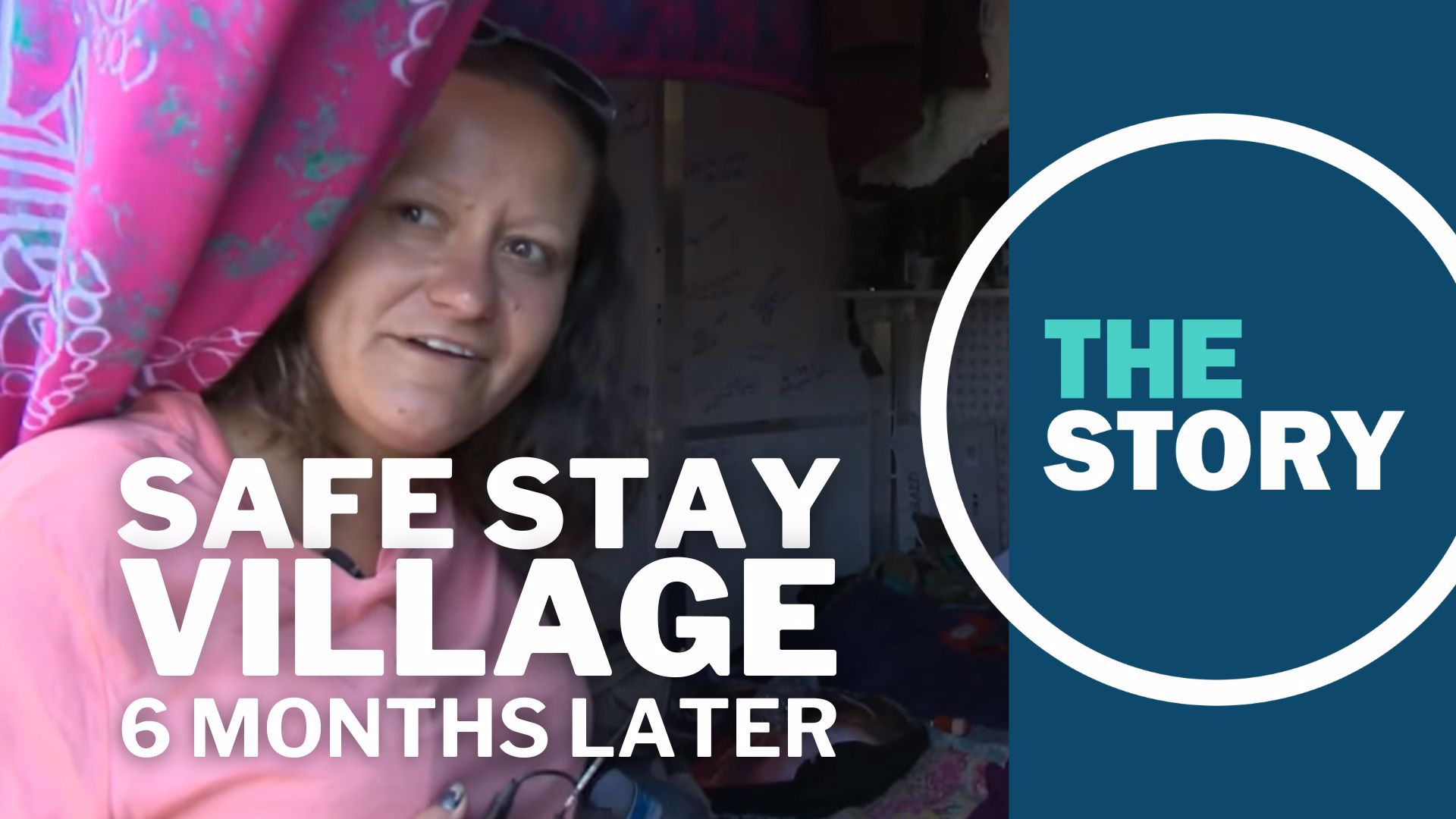VANCOUVER, Wash. — Six months after it began operating, Vancouver's first Safe Stay Community site is cleaned up, organized and safe — a sharp contrast to how the area off of Northeast 51st Circle appeared before the program got underway, full of camps and tents.
A new report issued by the city shines a light on some of the things that worked well during the first half year, as well as some things that could still use improvement.
Vancouver now operates two Safe Stay Communities, with three more planned.
The first Vancouver Safe Stay Community officially marked six months of existence near the end of June. According to the city's report, the village has served 46 people so far, 11 of whom got jobs, 32 of whom received health care, 16 of whom got ID cards and one of whom got a high school diploma.
Above all, 40 of the villagers completed housing assessments — getting one step closer to permanent housing — and 14 of them succeeded in moving into permanent housing, with 10 others in the process.
High success rate
The final count of 14 may seem small, but Vancouver Homeless Response Coordinator Jamie Spinelli was happy with it.
"I feel like its a great number," she said. "Numbers from shelter to housing tend to be kind of low. People tend to kind of stagnate when they move into shelter for a whole variety of reasons. They get comfortable there, they've got some stability so they want to stay. Because they're not out on the street, they're not the focus for emergency services — the focus tends to be on folks outside. So I feel the numbers out of here are fantastic. Thirty percent? That's a good rate."
In addition to the individual success stories, the city touts the fact that the creation of the community resulted in a 30% reduction in police calls within a 500-foot radius of the camp compared to the same time a year earlier. Emergency Medical Service calls also dropped 10%.
One thing that did not work: not everyone who arrived at the community opted to stay there. Eleven residents left during the first six months. But as far as residents like Courtney Ligman are concerned, the program not only works — it changed her life.
"I couldn't even look people in the face, because I was like I'd lost a big part of myself," she said. "And I didn't even realize it until I came here."
"I'm gonna cry but, getting your dignity back — it makes a difference. I get emotional cause it saved my life," she added.
Current and former residents approve
One of the former residents, Mike Palmer, said he worked for a temporary job company but couldn't afford housing.
"I'm gonna be 55 years old," he said. "I've been working my entire life. We don't do any of the extracurricular stuff, we just work. And when you work — when you work and you lose your home cause you're a worker — its kind of tough."
He and his wife slept in parks near Camas, he said, until he heard about the Safe Stay community. The couple stayed at the village for a while, and recently moved into their own apartment.
"Oh its awesome," he said. "I mean, I got a key to my own house. I can walk in and walk out, you know, cook my own food and do what I need. But if it wasn't for this place, being a start line to get to that place, I would still be there."
Ligman, one of the current residents said she lived in a tent on a trail near Interstate 205 before moving into the community in April. It was a welcome change; life in Vancouver became much harder after COVID hit.
"It's safe, it's safe compared to my tent," she said. "I don't have to worry about people coming in and stealing my stuff. You know, when you are out living in a tent, you can't lock your door. And then if you have to leave and go anywhere, people are constantly going through your stuff trying to take from you. So... it's a safe place."
She felt less than human out in her tent, she said, her dignity and hope stolen. Not anymore.
"This place definitely saved my life," she said. "And the people here are amazing. The staff are like — you can talk to them about anything. They just want to help. They know we're not coming in here sober. I was a massive alcoholic, meth addict when I came in here, you know? And they helped me go to Rainier Springs, they helped me with detox. They helped me with everything. And the lady who saved my life, watched my dog when I went to rehab so like, yeah. They saved my life."
Safe Rest Villages
Across the river in Portland, the city is at a similar early stage in the rollout of its own Safe Rest Village program, with similar lessons to be learned about what works and what doesn't.
Portland has six Safe Rest Villages planned, but so far only one is operational near Multnomah Village in Southwest Portland. It opened in June, and almost immediacy ran into a hiccup — in July, the federal government said the community violated a previous deed restriction for the site.
"We've assembled a team, reviewed more than 100 sites, selected and secured permissions for use of six sites, opened one Safe Rest Village, have two under construction and the remaining three are in the planning/permitting phrase," a city spokesman said in a statement.

